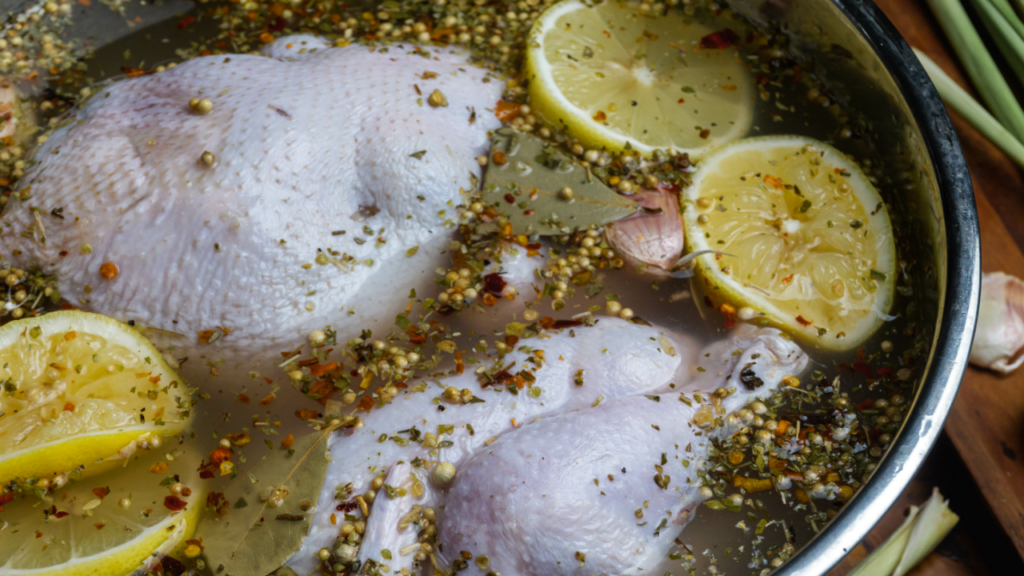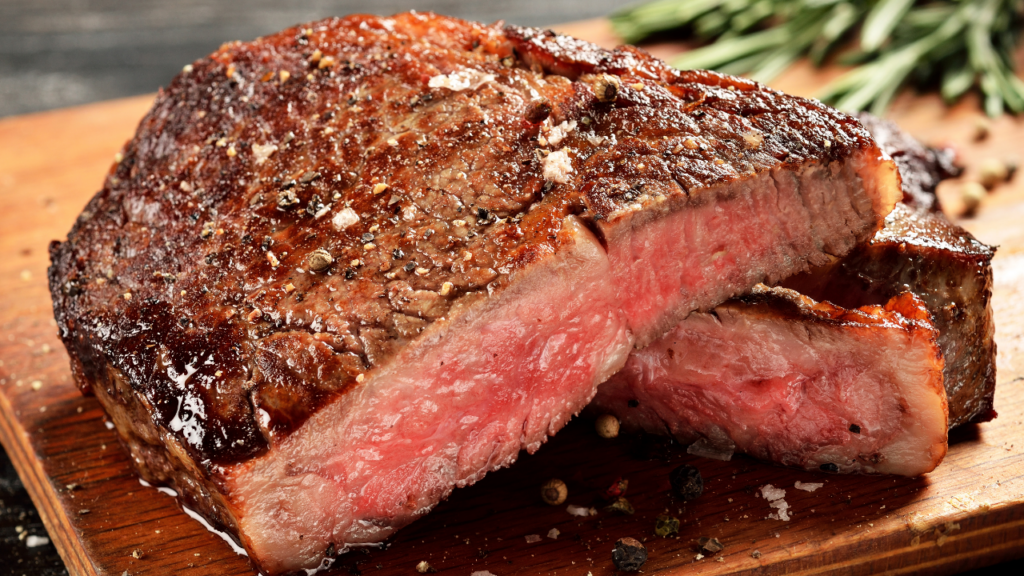The Magic of Salt: Brining and Beyond
Salt is a versatile ingredient that does more than just enhance flavor; it also plays a crucial role in tenderizing meat. The process of brining, which involves soaking meat in a solution of salt and water, is one of the most effective methods for tenderizing.
- Osmosis: Brining works through the process of osmosis, where the saltwater solution diffuses into the meat, increasing its moisture content. This added moisture not only makes the meat juicier but also helps to break down muscle proteins, making the meat more tender. For more on the science of osmosis in cooking, you can refer to this academic study on osmosis.
- Protein Modification: Salt alters the structure of meat proteins, causing them to unwind and form a gel-like matrix that traps water. This not only helps in tenderizing but also ensures that the meat remains juicy even after cooking.
Dry Brining: In addition to wet brining, dry brining is another technique where the meat is coated with salt and allowed to rest. This method is particularly effective for roasting meats like turkey or chicken, where a crispy skin is desired.
Practical Application: To create a basic brine, dissolve 1 cup of salt in 1 gallon of water and submerge the meat for several hours. For an added layer of flavor, consider adding sugar, herbs, and spices to the brine. For example, brining pork chops in a mixture of salt, brown sugar, and apple cider can enhance both the flavor and tenderness of the meat.

Combining Techniques for Maximum Tenderness
To achieve the best results, combining tenderizing techniques can be highly effective. For instance, you might start by brining a piece of meat to enhance its moisture content and then marinate it in an acidic or enzyme-rich solution for additional tenderizing.
Timing and Temperature: When combining methods, it’s crucial to monitor both the timing and temperature to avoid over-tenderizing the meat. Over-exposure to acids or enzymes can result in a mushy texture, while improper brining times can lead to overly salty meat.
Practical Example: For a dish like grilled pork tenderloin, you could brine the meat overnight in a saltwater solution, then marinate it for a few hours in a mixture of olive oil, lemon juice, garlic, and rosemary. This combination ensures the meat is both juicy and tender, with a flavorful crust.
Common Mistakes and How to Avoid Them
- Over-Marinating: Leaving meat in an acidic marinade for too long can result in a tough, rubbery texture. Stick to recommended marinating times, typically no more than 24 hours for tougher cuts and just a few hours for more delicate meats.
- Improper Use of Tenderizing Tools: While mallets and other mechanical tenderizers can be useful, they can also damage the meat if used too aggressively. Use these tools gently to avoid tearing the meat or causing uneven cooking.
- Not Accounting for Cooking Method: Some tenderizing methods work better with certain cooking techniques. For example, brining is particularly effective for roasting or grilling, while enzyme-based marinades may be better suited for quicker cooking methods like stir-frying.
Practical Tips: Always start with a smaller amount of marinade or brine and adjust as needed. It’s easier to add more time or ingredients than to fix over-tenderized meat. Also, consider the final cooking method when choosing your tenderizing approach.
Practical Recipes to Try
- Grilled Pineapple-Marinated Pork Chops:
- Marinate pork chops in a mixture of pineapple juice, soy sauce, garlic, and ginger for 2-4 hours.
- Grill over medium-high heat until cooked through, about 4-5 minutes per side.
- Yogurt-Marinated Lamb Kebabs:
- Marinate lamb cubes in a mixture of Greek yogurt, lemon juice, garlic, cumin, and coriander for at least 4 hours.
- Skewer and grill until charred and cooked to desired doneness.
- Brined and Roasted Turkey Breast:
- Brine turkey breast in a solution of water, salt, brown sugar, and bay leaves for 6-12 hours.
- Roast in the oven at 350°F until internal temperature reaches 165°F.

Conclusion
By mastering the science of meat tenderizing, you can elevate your culinary skills and transform a range of cuts into succulent and delicious dishes. Whether you’re using salt to brine, combining tenderizing techniques for optimal results, or avoiding common mistakes, each method offers unique benefits that can enhance your cooking.
With these insights, you can confidently tackle even the toughest cuts of meat, ensuring they turn out tender and flavorful every time. Experiment with different techniques, and don’t be afraid to combine methods to achieve the perfect texture.
Explore More: Dive deeper into the art of meat preparation and other cooking tips by visiting our full blog, where you’ll find a wealth of articles on flavor development, cooking techniques, much more and our wireless meat thermometer the Meat°it 3 for the perfect result, everytime.
